A Beginner’s Guide On How To Properly Choose And Use A Pressure Washer For The Most Effective Cleaning
Pressure washers can wash off grime and dirt quickly and more efficiently than manually hosing and scrubbing. They can work magic on your deck, driveway, backyard, patio, siding, outdoor furniture, and more. The best pressure washer can even take care of stains that have been on the surface for decades with a quick blast. You can also use these powerful machines on a wide range of outdoor cleaning tasks.
You have two choices when looking for the best power washer for your cleaning needs: gas and electric. Additionally, you have to consider several factors such as its pros and cons, your budget, and individual needs.
Keep in mind though that these cleaning machines can deliver a high-pressure water stream that’s not only powerful but concentrated as well. They can cause damage to your property and cause serious injuries if you don’t use them properly. Check out these basic tips for beginners.
How Does A Pressure Washer Work?
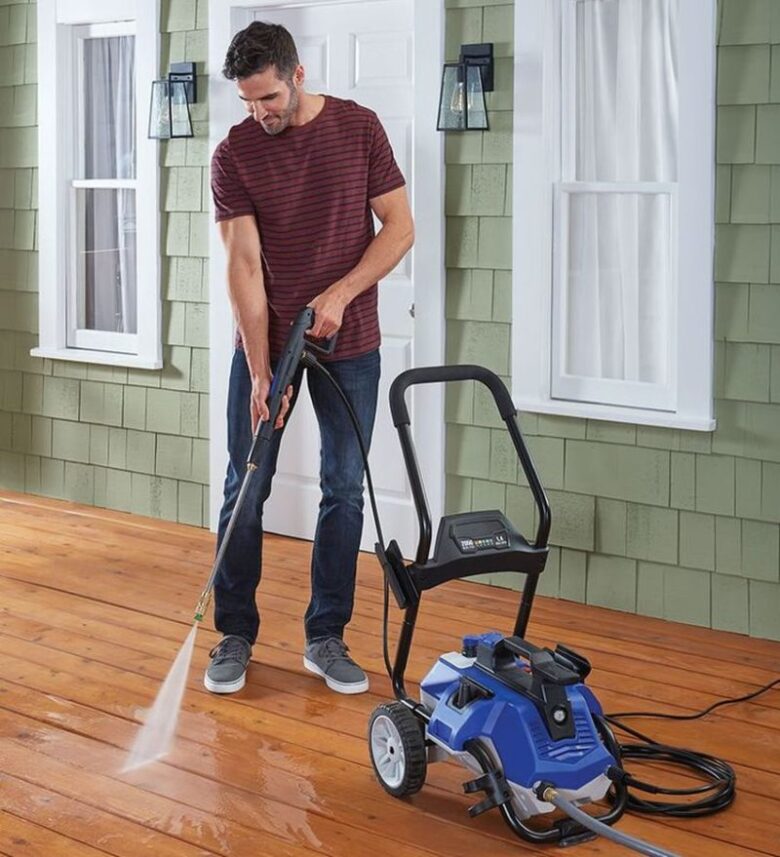
A power washer comes with either an electric motor or gas engine to power its pump which pressurizes water from a garden hose at very high pressure, usually between 1,000 to 3,000 PSI. The high-pressure stream of water is forced into a narrow concentrating spray wand to quickly get rid of all the accumulated dirt, debris, and grime from your surfaces.
Which Type Do I Need For My Home?
One of the foremost considerations when deciding which type you need is the amount of pressure. The higher the pressure of your equipment, the more power you’ll have at getting rid of the toughest of grime.
Electric Pressure Washer. This type is what you’ll find in most homes and a lot less cheaper. It has a lower PSI at an average range of 1,300 to 1,400. It’s ideal for your light to medium cleaning jobs like cleaning grills, patio furniture, and washing cars, to name a few. Find out additional info here.
Pros:
- Works well at taking care of your outdoor furniture, small patio or deck, and small cleaning tasks that mainly need upkeep rather than stain removal.
- You can conveniently start and stop them with a press of a button.
- Requires little maintenance and easy to store.
- These units are quiet and lightweight.
- Does not create harmful exhaust emissions.
- You don’t need to winterize your unit when storing it indoors.
Cons:
- It may take longer to complete some jobs since it has lower water pressure.
- The area you can clean will depend on the length of the hose and power cord of your equipment.
- Its nozzles and wands are typically made of plastic which is less sturdy compared to the metal fittings like with a gas pressure washer.
Gas Pressure Washer
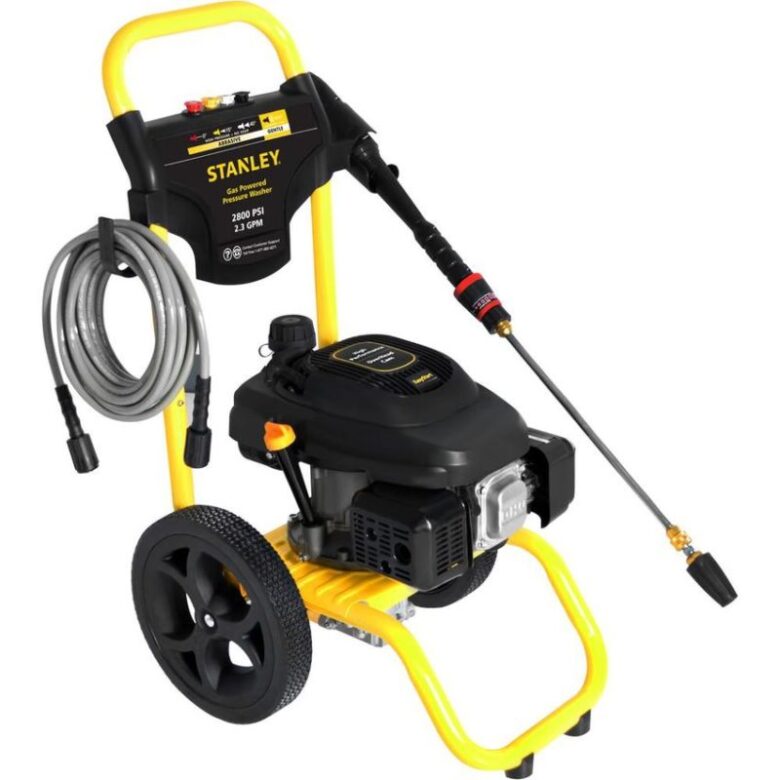
These units have an average PSI of about 2,000 to 2,800. They’re perfect at removing mildew stain, paint, and other heavy-duty cleaning tasks. Moreover, you’ll have the power and mobility for cleaning your sidewalks, exterior siding, patio, and deck.
Pros:
- It can deliver higher water pressure, which means you can remove tough grime and gunks.
- You can clean larger areas and surfaces quicker without the need to use cleaning solutions and chemicals.
- Ideal for both residential and commercial use.
Cons:
- Noisy and a bit on the heavy side.
- The pump may overheat if you leave it idle for a long time, which may result in ruining your unit if its safety valve breaks.
- Will need regular tune-ups.
- It delivers more power increasing the risk of injuries, as well as, splintering wooden surfaces and chipping paint accidentally.
- You need to winterize it using an antifreeze if you live in colder places since you cannot store it inside your home.
Remember that no matter what type of unit you have, your pressure washer is not a toy. It can expel water at a pressure that’s up to 80 times. And whatever spray setting you utilize, it can injure you or damage your property. Investigate this article to learn more.
Power Washer Nozzles
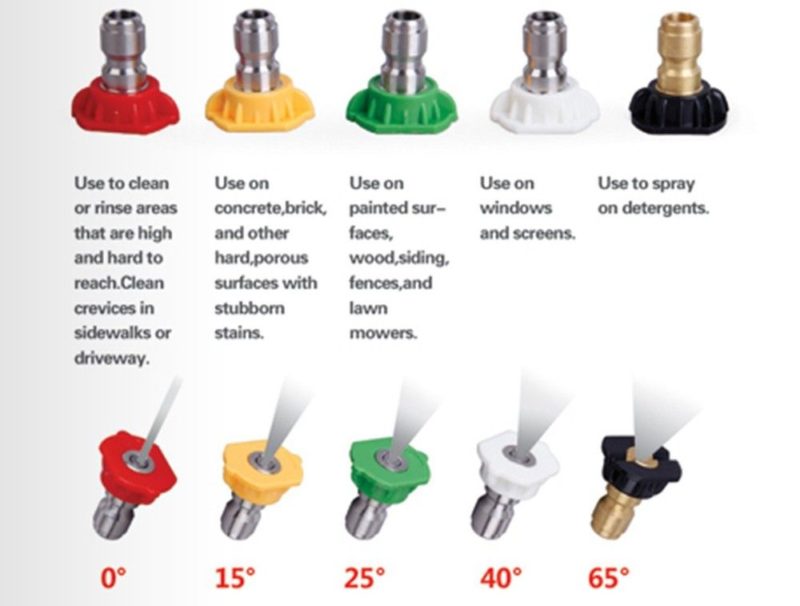
The pressure washer nozzle, found at the tip of the wand, controls the intensity and angle of water. Depending on the brand of your unit, it may come with either an adjustable nozzle or a color-coded set of interchangeable nozzles allowing you to choose the right angle for the job.
Most homeowners find adjustable nozzles to be handier since you only need to twist it to change from one spray pattern or width to the next. However, you will be able to customize your spray pattern with precise spray angles with replaceable nozzles.
The nozzles will normally include the following:
- Red nozzle. The 0 degree nozzle is the most concentrated and powerful setting.
- Yellow nozzle. The 15 degrees nozzle is ideal for your heavy-duty tasks.
- Green nozzle. Use the 25 degrees nozzle for your general cleaning jobs.
- White nozzle. The nozzle has a 40 degrees setting, and you can use it for cleaning your patio furniture, boats, and vehicles.
- Black nozzle. The low-pressure 65 degrees nozzle is perfect when you want to apply cleaning agents like soap.
Avoid using the red nozzle as much as possible to prevent injuries and damages. You can use other higher-degree settings, which can also handle the job without any unnecessary risk.
Accessories And Tools
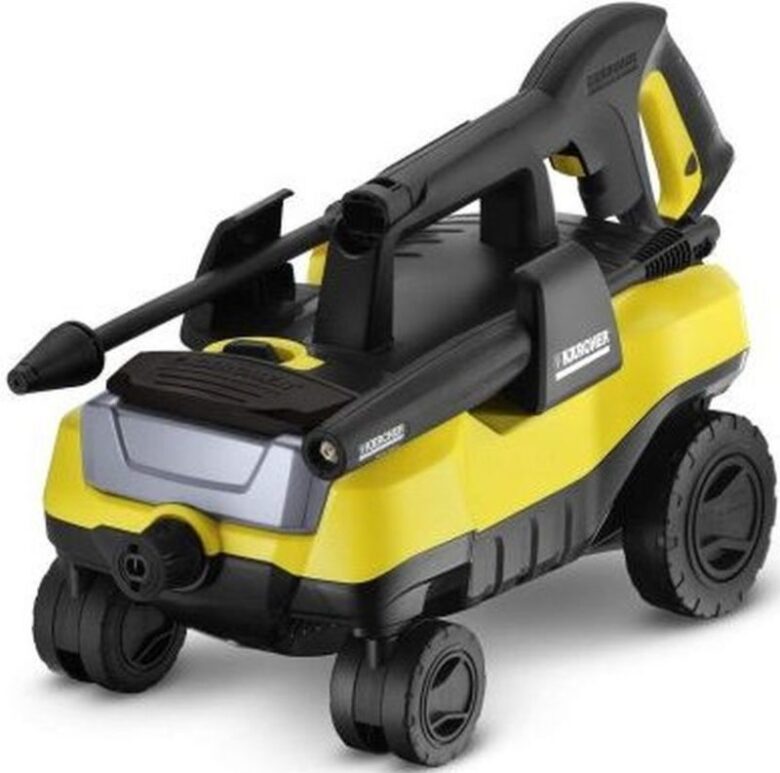
Check the accessories included in the unit you’re planning to buy. Make sure it has everything you need to get the job done properly. Also, investing in pressure washer accessories and tools will allow you to clean quickly and get more effective results.
- Allows you to utilize the power of scrubbing to your outdoor cleaning projects.
- Extensions spray tips and wand. These can help you tackle the second-story of your home and other hard-to-reach areas.
- Angled wands. You can use these with your extensions for cleaning gutters.
- Surface cleaners with spinning jets. These help clean your sidewalks and driveways more efficiently.
- Cleaning agents or solutions. To help you with various cleaning jobs. Check the specific chemicals you can use for your unit to avoid any problems.
Preparing Your Unit
- Start by first checking your power washer’s water strainer to make sure that it’s in the right place and there’s no debris in it.
- Connect your cleaning machine to your garden hose. Ensure that everything is secure and in place.
- Choose the type of nozzle you’ll use. Install it properly.
- Turn your pressure washer and let it and the attached hose to fill with water.
After you’ve performed these steps, you’re all set to use your unit. Make sure to be careful and attentive with all of its connections and that they’re secure before using your equipment. It’s always a good idea to double check everything before starting with your task.
How To Use An Electric-Powered Washer
An electric pressure washer is simpler to operate and use. Below are the steps you need to follow to operate it properly:
- Attach the garden hose and high-pressure hose on their proper place.
- Turn your faucet on.
- Purge water and air from your unit by depressing its spray wand trigger.
- Relieve your washer with any pressure that has built-up by holding the spray wand trigger continuously.
- Turn your power washer on while you’re still holding its trigger.
How To Use A Gas-Powered Washer
Follow the steps below to ensure you’re using your gas pressure washer properly:
- Check to ensure the oil and gas of your unit are full.
- Correctly release the plug.
- Attach the necessary hoses to your device.
- Turn your garden faucet on.
- Let the water run from your power washer first before starting to clean.
- Check its gas line.
- Switch its engine on.
- Press and hold the trigger of the spray wand to release any pressure that has built-up from your unit.
- Pull the cord of the engine while holding the trigger of the spray wand.
- Close the airflow of the engine by adjusting its choke down while you’re running the machine.
Pressure Washing Safety Tips
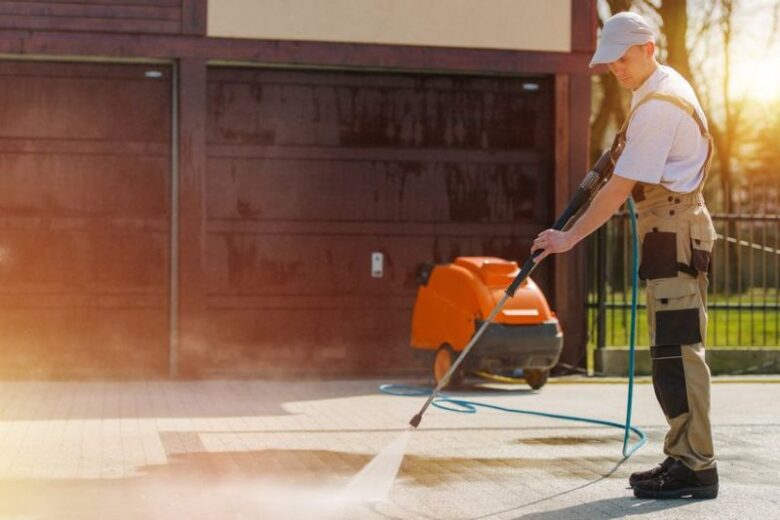
Thousands of individuals end up in hospitals from injuries caused by using a pressure washer. Its powerful stream of water can easily tear through your skin and the tissues underneath, which may lead to bacterial infections.
To prevent any unnecessary injuries, keep the following safety tips in mind when pressure washing:
- Always read the owner’s or manufacturer’s manual of your equipment before starting any cleaning jobs.
- Make sure to protect yourself with protective gear such as goggles, sturdy footwear, and long pants. Also, be extra careful when walking on wet, slippery surfaces.
- It is recommended to start with the widest spray angle.
- Start by running your nozzle at least 2 feet away from the surface you’ll clean, and then move closer if necessary.
- Test the machine first on a less noticeable surface until you’re comfortable with it.
- If your unit comes with replaceable nozzles and tips, turn the engine off first, press its trigger to drain out any excess water, and then change tips.
- Make sure not to get too close to the surface you’re cleaning, or you may end up damaging it.
- Never pressure wash while you’re standing on a ladder since pulling its trigger may cause you to lose your balance.
- Do not point its nozzle to yourself, pets, and other people around you.



